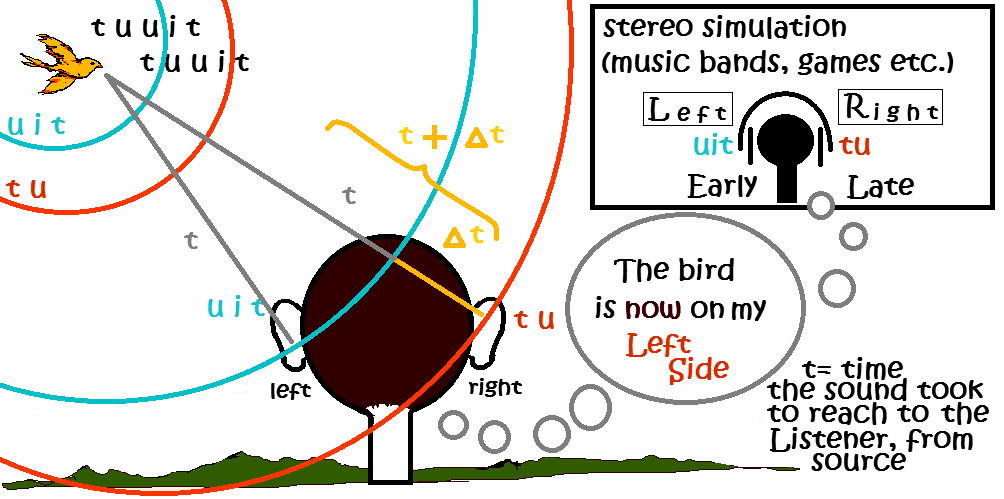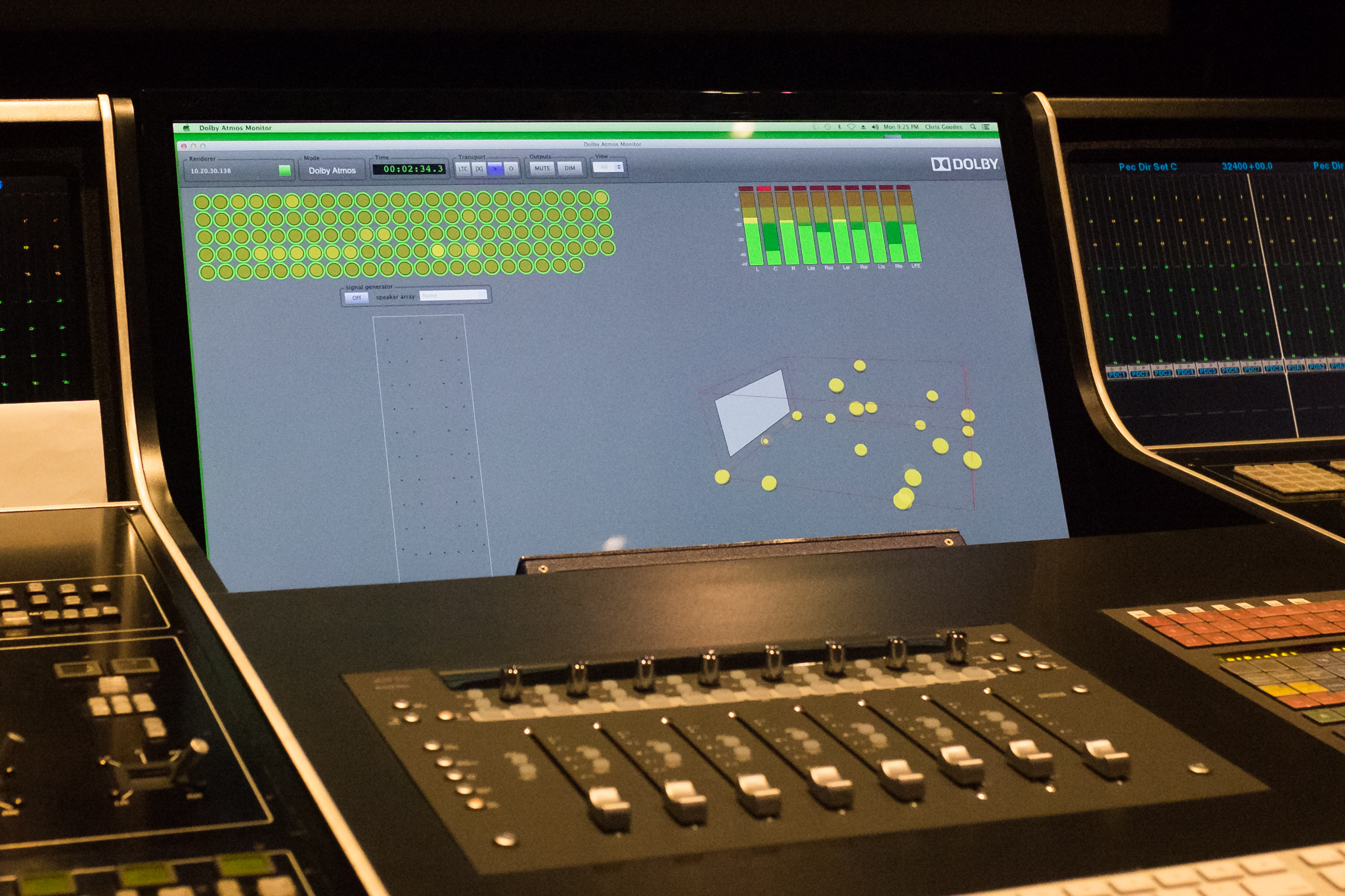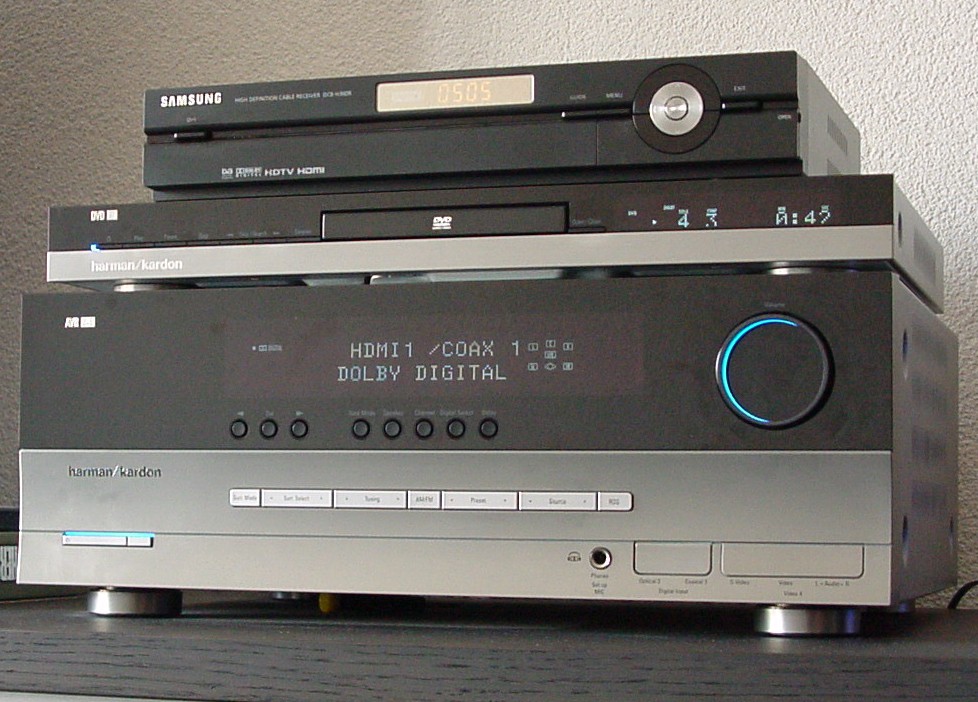|
DTS-HD MA
DTS-HD Master Audio (DTS-HD MA; known as DTS++ before 2004) is a multi-channel, lossless audio codec developed by DTS as an extension of the lossy DTS Coherent Acoustics codec (DTS CA; usually itself referred to as just DTS). Rather than being an entirely new coding mechanism, DTS-HD MA encodes an audio master in lossy DTS first, then stores a concurrent stream of supplementary data representing whatever the DTS encoder discarded. This gives DTS-HD MA a lossy "core" able to be played back by devices that cannot decode the more complex lossless audio. DTS-HD MA's primary application is audio storage and playback for Blu-ray media; it competes in this respect with Dolby TrueHD, another lossless surround format. Specifications DTS-HD MA can store up to 8 discrete channels of audio ( 7.1 surround) at up to a 24 bit sample depth and 192 kHz sampling frequency (96 kHz for 6.1 or 7.1 surround). Although DTS-HD MA, and the related DTS-HD, allow virtually any number of chan ... [...More Info...] [...Related Items...] OR: [Wikipedia] [Google] [Baidu] |
Surround Sound
Surround sound is a technique for enriching the fidelity and depth of sound reproduction by using multiple audio channels from speakers that surround the listener ( surround channels). Its first application was in movie theaters. Prior to surround sound, theater sound systems commonly had three ''screen channels'' of sound that played from three loudspeakers (left, center, and right) located in front of the audience. Surround sound adds one or more channels from loudspeakers to the side or behind the listener that are able to create the sensation of sound coming from any horizontal direction (at ground level) around the listener. The technique enhances the perception of sound spatialization by exploiting sound localization: a listener's ability to identify the location or origin of a detected sound in direction and distance. This is achieved by using multiple discrete audio channels routed to an array of loudspeakers. Surround sound typically has a listener location ( sweet ... [...More Info...] [...Related Items...] OR: [Wikipedia] [Google] [Baidu] |
Sound Object
In musique concrete and electronic music theory the term sound object (originally ''l'objet sonore'') is used to refer to a primary unit of sonic material and often specifically refers to recorded sound rather than written music using manuscript or a score. It was coined by Pierre Schaeffer in his publication ''Traité des objets musicaux'' (1966). Definitions Pierre Schaeffer According to Schaeffer: This unit of sound ound-objectis the equivalent to a unit of breath or articulation, a unit of instrumental gesture. The sound object is therefore an acoustic action and intention of listening. Schaeffer believed that the sound object should be free from its sonic origin (its sound source, or source bonding) so that a listener could not identify it, what he termed as acousmatic listening. Schaeffer's four functions of the "What Can be Heard" include: 1. A sonic entity is detected by its signal being picked up by the autonomous mechanism of hearing (ouïr) 2. The signalled sonic ... [...More Info...] [...Related Items...] OR: [Wikipedia] [Google] [Baidu] |
HD DVD
HD DVD (short for High Density Digital Versatile Disc) is an obsolete high-density optical disc format for storing data and playback of high-definition video.Alternative Uses for your soon to be obsolete HD-DVD Player . Retrieved September 18, 2019.Format Wars Retrieved September 18, 2019.HD DVD owners 'anger' over obsolete players Retrieved September 18, 2019. [...More Info...] [...Related Items...] OR: [Wikipedia] [Google] [Baidu] |
Blu-ray Disc
Blu-ray (Blu-ray Disc or BD) is a Digital media, digital optical disc data storage format designed to supersede the DVD format. It was invented and developed in 2005 and released worldwide on June 20, 2006, capable of storing several hours of high-definition video (HDTV 720p and 1080p). The main application of Blu-ray is as a medium for video material such as feature films and for the physical distribution of video games for the PlayStation 3, PlayStation 4, PlayStation 5, Xbox One, and Xbox Series X and Series S, Xbox Series X. The name refers to the blue laser used to read the disc, which allows information to be stored at a greater density than is possible with the longer-wavelength red laser used for DVDs, resulting in an increased capacity. The polycarbonate disc is in diameter and thick, the same size as DVDs and Compact disc, CDs. Conventional (or "pre-BDXL") Blu-ray discs contain 25gigabyte, GB per layer, with dual-layer discs (50GB) being the industry standard for fe ... [...More Info...] [...Related Items...] OR: [Wikipedia] [Google] [Baidu] |
Stereophonic Sound
Stereophonic sound, commonly shortened to stereo, is a method of sound reproduction that recreates a multi-directional, 3-dimensional audible perspective. This is usually achieved by using two independent audio channels through a configuration of two loudspeakers (or stereo headphones) in such a way as to create the impression of sound heard from various directions, as in natural hearing. Because the multi-dimensional perspective is the crucial aspect, the term ''stereophonic'' also applies to systems with more than two channels or speakers such as quadraphonic and surround sound. Binaural recording, Binaural sound systems are also ''stereophonic''. Stereo sound has been in common use since the 1970s in entertainment media such as broadcast radio, recorded music, television, video cameras, cinema, computer audio, and the Internet. Etymology The word ''stereophonic'' derives from the Greek language, Greek (''stereós'', "firm, solid") + (''phōnḗ'', "sound, tone, voice" ... [...More Info...] [...Related Items...] OR: [Wikipedia] [Google] [Baidu] |
S/PDIF
S/PDIF (Sony/Philips Digital Interface) is a type of digital audio interface used in consumer audio equipment to output audio over relatively short distances. The signal is transmitted over either a coaxial cable using RCA connector, RCA or BNC connector, BNC connectors, or a fibre-optic cable using TOSLINK connectors. S/PDIF interconnects components in home theaters and other digital high-fidelity systems. S/PDIF is based on the AES3 interconnect Technical standard, standard. S/PDIF can carry two channels of uncompressed PCM audio or Audio compression (data), compressed 5.1 surround sound; it cannot support lossless surround formats that require greater bandwidth (computing), bandwidth. S/PDIF is a data link layer protocol as well as a set of physical layer specifications for carrying digital audio signals over either optical or electrical cable. The name stands for Sony/Philips Digital Interconnect Format but is also known as Sony/Philips Digital Interface. Sony and Philips ... [...More Info...] [...Related Items...] OR: [Wikipedia] [Google] [Baidu] |
Linear PCM
Pulse-code modulation (PCM) is a method used to digitally represent analog signals. It is the standard form of digital audio in computers, compact discs, digital telephony and other digital audio applications. In a PCM stream, the amplitude of the analog signal is sampled at uniform intervals, and each sample is quantized to the nearest value within a range of digital steps. Alec Reeves, Claude Shannon, Barney Oliver and John R. Pierce are credited with its invention. Linear pulse-code modulation (LPCM) is a specific type of PCM in which the quantization levels are linearly uniform. This is in contrast to PCM encodings in which quantization levels vary as a function of amplitude (as with the A-law algorithm or the μ-law algorithm). Though ''PCM'' is a more general term, it is often used to describe data encoded as LPCM. A PCM stream has two basic properties that determine the stream's fidelity to the original analog signal: the sampling rate, which is the number of ... [...More Info...] [...Related Items...] OR: [Wikipedia] [Google] [Baidu] |
HDMI
High-Definition Multimedia Interface (HDMI) is a proprietary digital interface used to transmit high-quality video and audio signals between devices. It is commonly used to connect devices such as televisions, computer monitors, projectors, gaming consoles, and personal computers. HDMI supports uncompressed video and either compressed or uncompressed digital audio, allowing a single cable to carry both signals. Introduced in 2003, HDMI largely replaced older analog video standards such as composite video, S-Video, and VGA connector, VGA in consumer electronics. It was developed based on the CEA-861 standard, which was also used with the earlier Digital Visual Interface (DVI). HDMI is electrically compatible with DVI video signals, and adapters allow interoperability between the two without signal conversion or loss of quality. Adapters and active converters are also available for connecting HDMI to other video interfaces, including the older analog formats, as well as digital fo ... [...More Info...] [...Related Items...] OR: [Wikipedia] [Google] [Baidu] |
Digital-to-analog Converter
In electronics, a digital-to-analog converter (DAC, D/A, D2A, or D-to-A) is a system that converts a digital signal into an analog signal. An analog-to-digital converter (ADC) performs the reverse function. DACs are commonly used in music players to convert digital data streams into analog audio signals. They are also used in televisions and mobile phones to convert digital video data into analog video signals. These two applications use DACs at opposite ends of the frequency/resolution trade-off. The audio DAC is a low-frequency, high-resolution type while the video DAC is a high-frequency low- to medium-resolution type. There are several DAC architectures; the suitability of a DAC for a particular application is determined by figures of merit including: resolution, maximum sampling frequency and others. Digital-to-analog conversion can degrade a signal, so a DAC should be specified that has insignificant errors in terms of the application. Due to the complexity ... [...More Info...] [...Related Items...] OR: [Wikipedia] [Google] [Baidu] |
RCA Connector
The RCA connector is a type of electrical connector commonly used to carry analog audio and video signals. The name refers to the popular name of Radio Corporation of America, which introduced the design in the 1930s. Typically, the output is a plug type connector and the input a jack type connector. These are referred to as RCA plug and RCA jack respectively. It is also called a phono connector, referring to its early use to connect a phonograph turntable to a radio receiver. As home audio systems became more complex, RCA cables became a standard way to connect components such as radio receivers, amplifiers, turntables, tape decks, and CD players. Their ubiquity led to them also being used for video: connecting analog televisions, videocassette recorders, DVD players, and game consoles. They remain in use as a simple, widely supported means of connection. In some European countries such as France and Germany, the name ''cinch'' is still used as an antonomasia of ... [...More Info...] [...Related Items...] OR: [Wikipedia] [Google] [Baidu] |
Dolby Atmos
Dolby Atmos is a surround sound technology developed by Dolby Laboratories. It expands on existing surround sound systems by adding height channels as well as free-moving sound objects, interpreted as three-dimensional objects with neither horizontal nor vertical limitations. Following the release of Atmos for the cinema market, a variety of consumer technologies have been released under the Atmos brand. The initial cinema Atmos systems used in-ceiling loudspeaker, speakers, then upward-firing speakers (e.g. for soundbars) were introduced as an alternative for consumer products. Atmos is also used on some devices that do not have a height channel, such as headphones, televisions, mobile phones, and Tablet computer, tablets. History The first Dolby Atmos installation was in the El Capitan Theatre in Los Angeles, for the premiere of Brave (2012 film), ''Brave'' in June 2012. Throughout 2012, it saw a limited release of about 25 installations worldwide, with an increase to more t ... [...More Info...] [...Related Items...] OR: [Wikipedia] [Google] [Baidu] |
AV Receiver
An audio/video receiver (AVR) or a stereo receiver is a consumer electronics component used in a home theater, home audio, or hi-fi system. Its purpose is to receive audio and video signals from a number of sources, and to process them and provide power amplifiers to drive loudspeakers, and/or route the video to displays such as a television, computer monitor, monitor or video projector. Inputs may come from a tuner (radio), TV, FM, or AM tuner, satellite receiver, DVD players, Blu-ray Disc, Blu-ray Disc players, VCRs or video game consoles, among others. The AVR source selection and settings such as volume, are typically set by a remote controller. History A "radio receiver, receiver" in its most basic form is an amplifier, typically at least a two-channel stereo model, that has a built-in radio tuner. Over time, features were integrated that would otherwise require separate pieces of equipment, such as preamplifiers, equalizers, and multiple power amplifiers. As home enterta ... [...More Info...] [...Related Items...] OR: [Wikipedia] [Google] [Baidu] |





